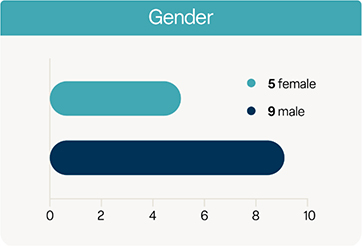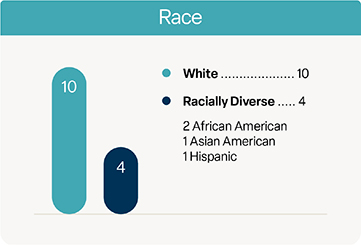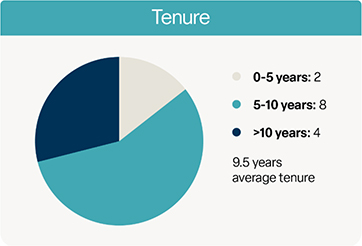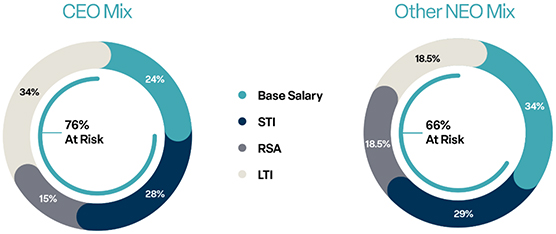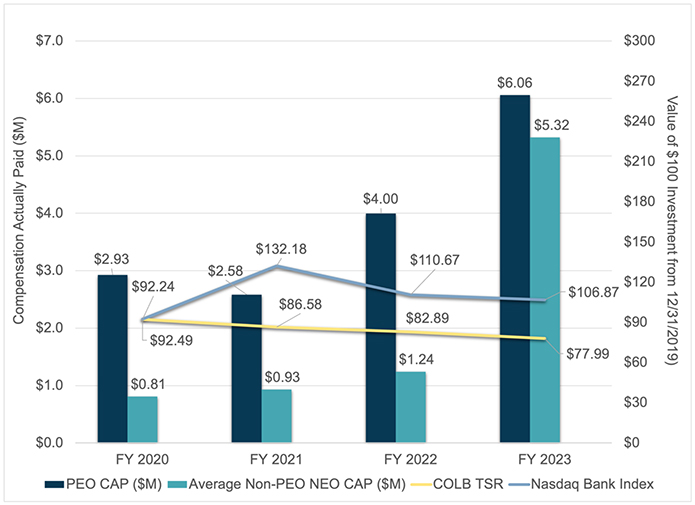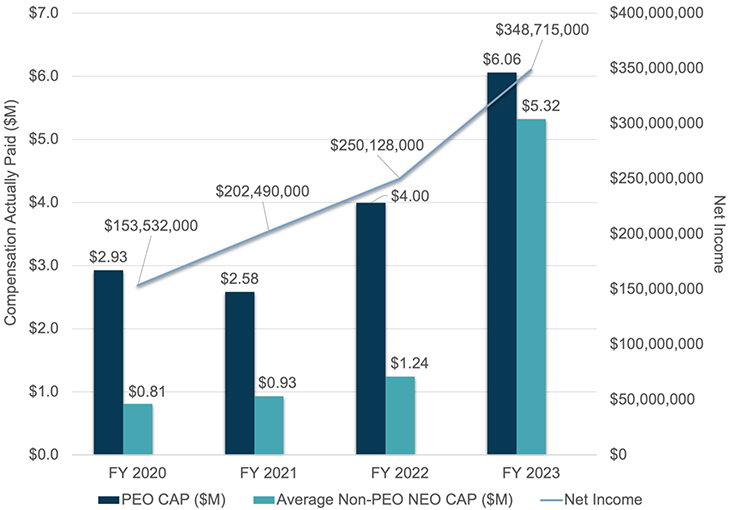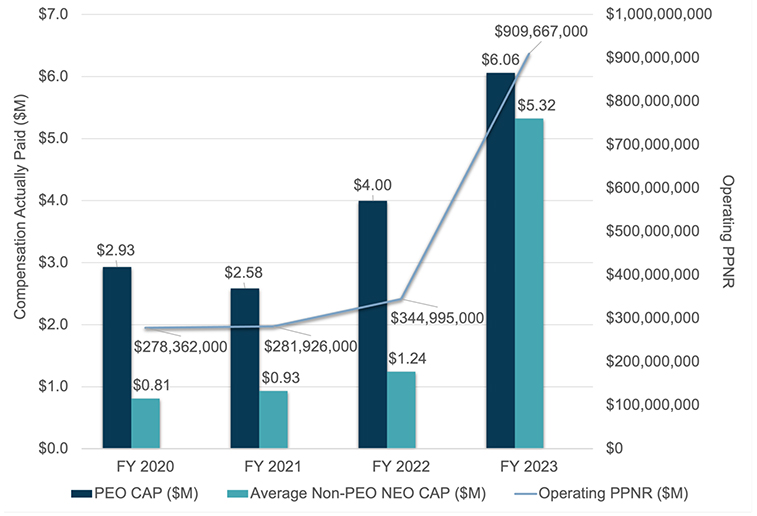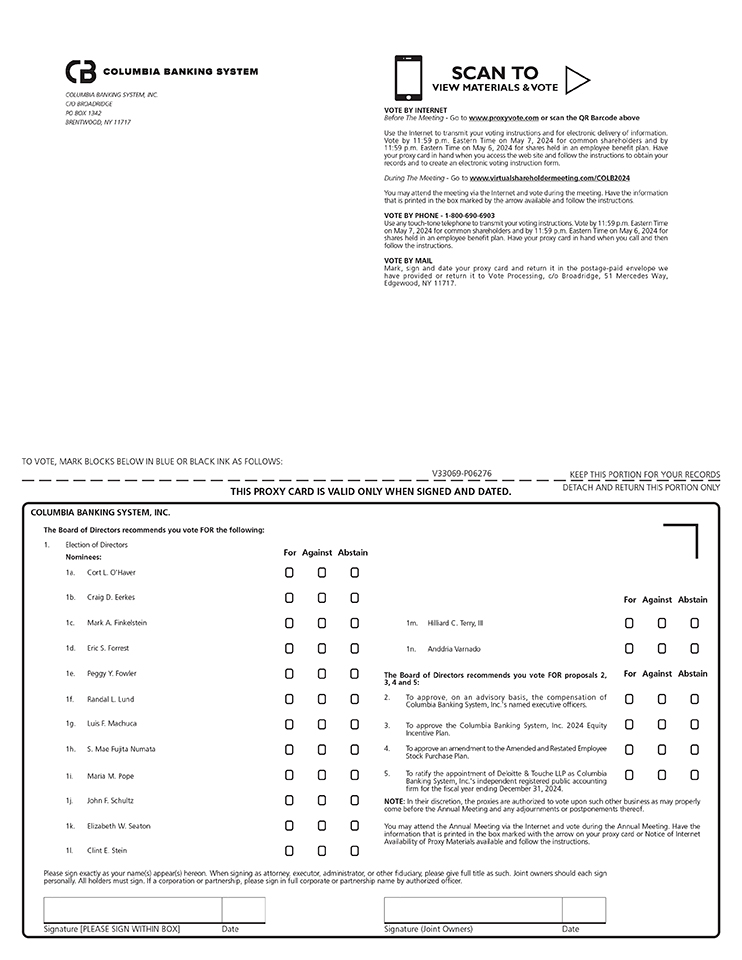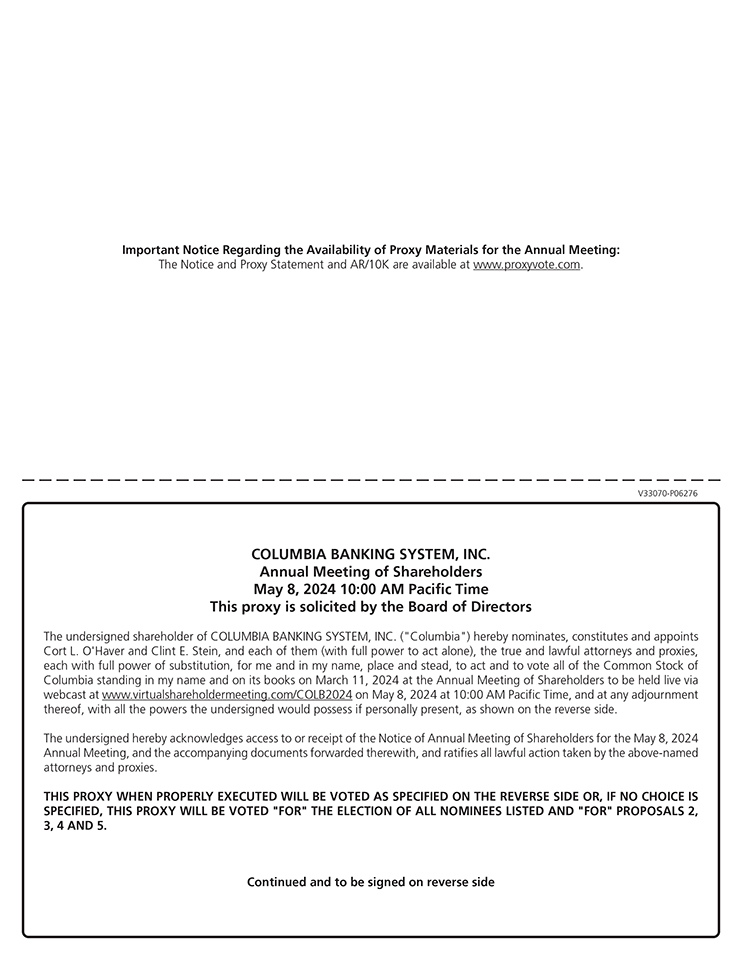| |
Non-Equity Incentive Plan Compensation column above for 2022). The material terms of the 2016 Deferred Compensation Plan are described under “Post-Employment and Termination Benefits—Deferred Compensation Plans.” |
| (3) |
For 2023, amounts shown for Messrs. Stein, Merrywell, and Deer include (a) the grant date fair value of Restricted Stock Units granted on February 21, 2023, that vest one-third each year on February 15, 2024, 2025 and 2026, and (b) the grant date fair value of Performance Stock Units granted on February 21, 2023, for the 2023-2025 performance period (with respect to Messrs. Stein’s, Merrywell’s, and Deer’s annual Performance Stock Unit awards), and March 14, 2023 (with respect to the Performance Stock Unit component of Mr. Stein’s synergy integration award). At stretch (maximum) performance, the Performance Stock Units’ grant date fair value would be $3,183,356 for Mr. Stein, $914,115 for Mr. Merrywell, and $190,437 for Mr. Deer. For Mr. O’Haver, amount shown is the grant date fair value of Restricted Stock Units granted on March 1, 2023, one-third of which vested on April 19, 2023 (the Executive Chair Systems Conversion Date) and one-third of which vest on each of the first and second anniversaries thereof. |
For 2022, amounts shown include (a) the grant date fair value of Restricted Stock Units granted on February 24, 2022, that vest one-third each year on February 15, 2023, and 2024, and February 14, 2025, and (b) the grant date fair value of Performance Stock Units granted on February 24, 2022, for the 2022-2024 performance period. At stretch performance, the Performance Stock Units’ grant date fair value would be $1,570,567 for Mr. Stein, $213,179 for Mr. Deer, and $410,044 for Mr. Merrywell.
For 2021, amounts shown include (a) the grant date fair value of Restricted Stock Units granted on February 25, 2021, that vest one-third each year on February 15, 2022, 2023, and 2024, and (b) the grant date fair value of Performance Stock Units granted on February 25, 2021, for the 2021-2023 performance period. At stretch performance, the Performance Stock Units’ grant date fair value would be $1,123,823 for Mr. Stein, $204,461 for Mr. Deer, and $285,960 for Mr. Merrywell.
| (4) |
The grant date fair value of stock awards was determined in accordance with FASB ASC 718. Assumptions used to calculate these amounts are set forth in footnote 4 to “2023 Grants of Plan-Based Awards” and in Note 20 to the Company’s audited financial statements for the fiscal year ended December 31, 2023, included in the Company’s 2023 Annual Report. The grant date fair value of the Restricted Stock Units granted in 2023 is based on the closing price of Columbia’s common stock on Nasdaq on the grant dates of February 21, 2023 ($30.77 per share) and March 1, 2023 ($29.95 per share). The grant date fair value of the Performance Stock Units granted in 2023 is shown at target performance and is based 50% on the closing price of Columbia’s common stock on Nasdaq on the grant dates, February 21, 2023 ($30.77 per share) and March 14, 2023 ($21.53 per share), and 50% on a fair value calculation using a Monte-Carlo simulation for the February 21, 2023 awards ($31.74 per share) and for the March 14, 2023 award ($20.74 per share). |
| (5) |
The amounts in this column reflect the annual incentive awards earned under the 2023 Annual Incentive Plan. |
| (6) |
For Mr. Stein, includes the change in actuarial present value of the accumulated projected benefit under the SERP, which is a non-cash amount that can vary significantly from year-to-year based upon assumptions underlying the actuarial calculations. Assumptions such as discount rate and retirement age are reviewed annually by the Company and are intended to be individually appropriate. The SERP is discussed in further detail under “Post-Employment and Termination Benefits —Legacy Supplemental Executive Retirement Plan.” |
For 2023, amounts shown include for Mr. Stein $192,940 of change in the actuarial present value of projected benefit under the SERP, in which Mr. Stein is not fully vested, and $25,495 of above-market earnings on his deferred compensation accounts under the Amended and Restated Columbia Banking System, Inc. 2005 401 Plus Plan and the Columbia Banking System, Inc. 2016 401 Plus Plan, as amended (individually and collectively, “DCA”); and for Messrs. O’Haver, Merrywell, Nixon and Deer, $180,180, $35,350, $59
717 and $43,513 of above-market earnings on DCA or other deferred compensation accounts.
For 2022, amounts shown include: for Mr. Stein, $(719,501) of change in the actuarial present value of projected benefit under the SERP, in which Mr. Stein is not fully vested, and $11,270 of above-market earnings on his DCA; and for Mr. Deer, $2,421 of above-market earnings on his DCA. Since the changes in actuarial present value of projected benefit under the SERP for Mr. Stein were negative, they are not reflected in the sums reported in this column in accordance with SEC rules.
For 2021, amounts shown include: for Mr. Stein, $11,895 of change in the actuarial present value of projected benefit under the SERP, in which Mr. Stein is not fully vested, and $8,572 of above-market earnings on his DCA; and for Mr. Deer, $197 of above-market earnings on his DCA.
| (7) |
The aggregate amount of perquisites and other personal benefits for the NEOs was less than $10,000 and are therefore not disclosed. |
For 2023, amount shown for Mr. Stein includes the cash component of his synergy integration award which equals $550,000 and was paid on April 19, 2023 in connection with the completion of the Systems Conversion; $13,200 in 401(k) plan matching contributions; $6,600 in 401(k) discretionary contributions; $1,436 in split dollar life insurance premiums; $6,606 in split dollar bonus earnings; $85,254 in accrued dividends on unvested Performance Stock Units; and $890 in Company contributions to his Unit Plan. Unit Plans are described in further detail under “Post-Employment and Termination Benefits —Unit Plans.”
For 2023, amount shown for Mr. Farnsworth includes the vested portion of a cash retention award granted pursuant to the terms of the Farnsworth Letter Agreement which equals $612,000 and was paid on April 19, 2023 in connection with the completion of the Systems Conversion; $13,200 in 401(k) plan matching contributions; $6,600 in 401(k) discretionary contributions; and $20,231 in accrued dividends on unvested Performance Stock Units.
For 2023, amount shown for Mr. O’Haver includes $5,250,000 contributed into a deferred compensation account pursuant to the terms of the O’Haver Letter Agreement, $13,200 in 401(k) plan matching contributions, $6,600 in 401(k) discretionary contributions, and $59,007 in accrued dividends on unvested Performance Stock Units.
For 2023, amount shown for Mr. Merrywell includes $1,030,000 credited to a deferred compensation pursuant to the terms of the Merrywell Letter Agreement, which vests 50% on each of February 28, 2024 and February 28, 2025; the vested portion of a cash retention award granted pursuant to the terms of the Merrywell Letter Agreement, which equals $340,000 and was paid on April 19, 2023 in connection with the completion of the Systems Conversion; $13,200 in 401(k) plan matching contributions; $6,600 in 401(k) discretionary contributions; $3,903 in split dollar life
54










